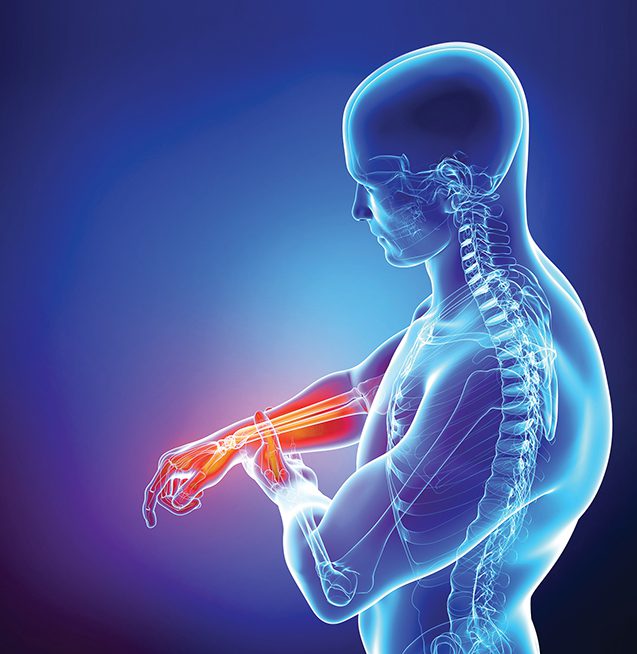Ergonomics is the interdisciplinary scientific field concerned with understanding interactions between humans and the systems within which they exist. The field draws on knowledge from diverse areas, and ergonomists seek to apply this knowledge to enhance health and safety, comfort, quality, and productivity.
Ergonomics is also a way of looking at the world that focuses on the capabilities, motivations, behaviours and preferences of people and their interaction with the environment. Primarily, ergonomics is about maximising efficiency, effectiveness, quality, comfort, safety and pleasure in the interactions between people and the systems within which they live, work and play. The aim is to achieve this by ensuring that systems are designed in such a way that the interactions between people and their environment are consistent with those capabilities, motivations, behaviours and preferences. The emphasis is on changing the systems to suit people, rather than requiring people to adapt to these systems.
A risk management framework is frequently adopted by ergonomists to guide the application of the principles of ergonomics to any particular problem. The process starts with establishing an understanding of the broader context in which the particular person–system interaction takes place before undertaking hazard identification and risk assessment. Assuming the outcome of the risk assessment is that action is indicated, the risk control phase incorporates identifying and evaluating potential control options, before implementing and reassessing the implemented controls. From an ergonomist’s perspective, the emphasis for risk control is on elimination or reducing risk through design controls, rather than administrative controls such as training, selection or personal protective equipment, which have minimal effect unless combined with design-based controls.
Participative Ergonomics
The emphasis is on changing the systems to suit people, rather than requiring people to adapt to these systems.
Participatory Ergonomics differs from ‘expert-driven’ ergonomics in that is formalises the ability of active participation of the workers in the risk identification, assessment and control processes. Most importantly, this process also places emphasis on consultation with the people concerned at each step. This issue is at the heart of “participative ergonomics” approaches, which take as an underlying assumption the notion that the people involved in each manual task are the “experts” and must be involved at each stage of the risk management cycle. In an occupational injury management context, this implies that appropriate employees and managers actively participate through the hazard identification, risk assessment, risk control and review steps of the risk management cycle. The role of the ergonomist in this context is to facilitate the process and provide the expertise necessary to undertake the process. Ideally, skills transfer also occurs and the risk management process is sustainable without further intervention from an external ergonomist unless required for particularly complex tasks.
Many variations in the models and techniques used in participative ergonomics have developed including differences in the role of the ergonomist and the training provided to work teams (Haims and Carayon 1998; Burgess-Limerick et al 2007; Van Eerd et al 2008). However, a common element is to ensure utilisation of the expert knowledge that workers have of their own tasks by involving them in improving their workplaces. Management commitment and provision of resources, workers’ and management’s understanding of relevant ergonomics concepts and techniques, and a process to efficiently develop and implement suggested control measures also appear to be important components of successful participative ergonomics interventions. Both randomised controlled trials and systematic reviews have concluded that participative ergonomics programs have significant potential to reduce manual tasks injury risks and subsequent injuries (Straker et al 2004; Cole et al 2005).
Participative ergonomics has been used to create more human-centred work and to improve work organisational climate, as well as to prevent musculoskeletal disorders associated with manual tasks. This approach to manual task risk management requires work teams to be knowledgeable about the risk management framework, to have the skills and tools required to assess manual tasks risks, to understand the risk control hierarchy, and to have knowledge of general principles of control strategies for eliminating and controlling manual task risks. Appropriate training for workers to acquire these skills and work within a risk management framework is consequently a key concern.
Team members identify hazards in their work and are facilitated through a risk assessment process that requires them to develop control suggestions. The work teams plan the implementation of key controls and are subsequently shown how to evaluate those controls. Management commitment and effective risk management systems are required for the approach to be effective, and access to external ergonomics expert assistance may be necessary for particularly difficult or complex problems.
It is also important to note that ergonomics is equally concerned with improving productivity and reducing waste, as with reducing injury risks (see Dul 2003). This is crucial, because any design modification implemented to reduce injury risk must be easier, quicker and more efficient than the previous methods of work. If not, the chance of adherence to the new methods is markedly reduced and ongoing supervision will be required to ensure compliance.
Managing manual tasks injury risks
Managing manual tasks risks requires identifying hazardous manual tasks and, where possible, eliminating them. Where hazardous manual tasks cannot be eliminated, the degree and source of risk associated with the tasks requires assessment, and design controls need to be implemented to reduce the risk as far as is reasonably practicable. Administrative controls may also be required to manage the residual risks.
Successful management of manual tasks risks requires involvement of the people who perform the tasks as well as other people in the workplace, such as supervisors and managers. Training in manual task risk assessment and control is required to ensure this participation is successful.
Training
The first step in the Participative Ergonomic process for injury risk reduction is to ensure that the workers who are going to be involved in the process are appropriately trained. Traditionally, training has been given to workers to try to reduce occupational injuries by educating them on ‘proper manual handling techniques’. This type of training has been found to be completely ineffective and should not be undertaken. Rather, the injury risk management training given to workers should focus on enabling them to become involved in the risk identification, assessment and control development processes associated with Participative Ergonomics. Specifically, this training should include (as a minimum):
- information on the cyclic risk management process and how to perform risk identification and assessments,
- the real causes of musculoskeletal injury and the associated risk factors
- the control development and assessment process with particular attention paid to the hierarchy of controls.
Identifying hazardous manual tasks
Identification of hazardous manual tasks requires consultation with employees, observation of manual tasks, and reviewing workplace records. A task should be considered as potentially hazardous if any of the following apply:
- a musculoskeletal injury has been recorded that was associated with performance of the task, or if employees often complain about musculoskeletal soreness associated with the performance of the task
- any employee is physically incapable of performing the task
- the task can be done only for a short time before stopping
- the mass of any object, person, or animal being handled exceeds 16 kg
- if the force exerted on any object, person, or animal exceeds 200 N
- if the postures adopted to perform the task involve substantial deviations from neutral
- if the task involves static postures held for longer than 30 seconds and the task is performed for more than 30 minutes without a break, or for more than two hours per shift
- if the task involves repetitive movements of any body part and is performed for more than 30 minutes without a break, or for more than two hours per shift
- if the task is performed for longer than 60 minutes at a time without a break
- if the task is performed for longer than four hours per shift
- any employee reports discomfort associated with the manual task
- employees have improvised controls for the task (e.g. phone books for foot stools, use of furniture other than that provided for the task, etc)
- the task has a high error rate
- workers doing this task have a higher turnover, or rate of sick leave, than elsewhere in the organisation
- if exposure to whole body vibration (vehicles) or peripheral vibration (power tools) exceeds two hours per shift.
If, after adequate consultation, observation and review of records, none of the above conditions or thresholds are met for a particular manual task in a workplace, then it is reasonable to conclude that the manual task is likely to constitute a low risk of musculoskeletal injury. For each manual task identified as requiring assessment, it is sensible to ask whether the task can be easily eliminated. If the manual task can be eliminated, and this is done, then there is no need for further analysis.
Assessing manual tasks risks
If hazardous manual tasks exist that cannot be eliminated, the next step is to assess the risks. The aim of the risk assessment is to assist the risk control process by providing information about the sources of the risk and the severity of the risk.
The assessment should be undertaken with the active involvement of the people who perform the tasks. The assessment of manual tasks risks is complicated by the number of aspects of the task that contribute to determining the injury risk (i.e. exertion, exposure, posture, static or repetitive movement patterns and environmental factors), and by the interactions between each of these different risk factors. For example, awkward postures are unlikely to significantly increase the risk of injury unless they are extreme and/or are combined with prolonged tissue exposure, which can alter tissue capacity. The risk assessment process is also further complicated by the number of different parts of the body that can be injured and by the variety of possible ways injury can occur for each region of the body.
Injuries occur when the forces on a biological tissue (e.g. muscle, tendon, ligament, bone) are greater than the tissue can withstand. Injuries can occur suddenly, as a consequence of a single exposure to a high internal tissue load. Injuries can also arise gradually, as a consequence of repeated or long duration exposure to lower levels of tissue load. Even low levels of force can cause small amounts of damage to body tissues. This damage is normally repaired before injury occurs. However, if the rate of damage is greater than the rate at which repair can occur, an injury is likely to occur. Injuries can also result from a combination of these mechanisms (e.g. a tissue that has been weakened by cumulative damage may be vulnerable to sudden injury by forces that were previously unlikely to cause injury prior to the tissues capacity being reduced). The manual task risk assessment tools chosen needs to consider all of these possible injury mechanisms.
Injuries associated with manual tasks can occur to a range of different parts of the body, and the injury risks associated with a task will vary for different body regions. Consequently, the degree of exposure to different risk factors must be assessed independently for each body region. As well as the internal forces placed on the biological tissues, the risk of injury to a body part is also dependent on the movements and postures involved, the relative durations of exposure and recuperation periods, and whether there is exposure to vibration and other environmental risk factors. The risk assessment must address each of these risk factors and the interactions between them. A variety of tools for evaluating manual tasks risks are available (e.g. Burgess-Limerick 2004; 2012; Burgess-Limerick et al., 2004, 2007; see also www.ergoanalyst.com for software to assist in manual task risk management). Most important of all, the risk assessment tool used must; be easy to use, engage the workers so that they can visualise the risk and effectively identify the specific risk factors that must addressed in order to reduce the risk of injury.
The first step in assessing the risk of injury associated with a particular hazardous manual task is to determine the body regions of interest. These may be self-evident, in that the task has been identified as causing injuries or discomfort to a particular body part or parts. Alternately, the risk assessment should consider the risk of injury to each of the following regions independently: lower limbs, back, neck/shoulder, elbow/wrist/hand.
The ultimate aim of manual task risk management is to ensure that all tasks performed in workplaces involve dynamic and varied movements of all body regions with low to moderate levels of force, comfortable and varied postures, no exposure to whole body or peripheral vibration, and that breaks are taken at appropriate intervals to allow adequate recovery. Injury risk is elevated by deviations from this optimal situation, and injuries are most likely to occur when significant exposure to multiple risk factors occurs.
Controlling manual task risks
Having determined that a particular manual task performed in the workplace has the potential to cause injury, the first step in reducing that risk is to determine if the manual tasks can be eliminated. If this is possible, this will be the most effective way of reducing injuries. Some manual tasks can be eliminated by examining the flow of materials and reducing double handling. Others may be able to be eliminated by changing to bulk handling systems. Outsourcing hazardous manual tasks may also be an appropriate way of eliminating hazards if the organisation undertaking the task has specialised equipment that reduces the injury risk to acceptable levels. Some tasks, such as cleaning up waste, are non-productive and may be able to be eliminated or reduced by examining the source of the waste.
If, after the possibilities have been examined, it is determined that some hazardous manual tasks cannot practicably be eliminated, the next step is to devise design controls that will reduce the injury risks. This step is also most effectively undertaken in consultation with the people who perform the work (i.e. via a participative ergonomics process). Apart from the fact that these people are the ones who know most about the tasks, the probability of success of the design changes is enhanced if the people concerned have a sense of ownership of these changes. It is also important to ensure that all people affected by proposed design changes are consulted. For example, maintenance, engineering and supervisory staff as well as operational staff may need to be involved. Before implementing the design controls it is also important to reassess the risk once more to determine if the risk will be adequately reduced and to consider whether new hazards will be introduced as a consequence of the control.
The following framework is a useful way of thinking about possible design controls:
- WORK AREAS: Work height, space, reach distances, work flow and adjustability.
The design of work areas has a large impact on manual tasks injury risks. For example, limited space, limited clearances and restricted access to work are common causes of awkward postures. Work should be located at an appropriate height and close to the body. Providing adjustability of workstations may be an option to accommodate workers of different sizes. Workplaces should also be designed to increase postural variability during work.
- LOADS: Size, shape, weight, stability, location and height.
The nature of loads delivered to a workplace, handled within a workplace or produced by a workplace are a common source of hazardous manual tasks. Increasing the size and mass of loads and implementing mechanised bulk handling systems is an effective design control. Reducing the size and weight of loads is another option, but requires training and ongoing supervision; otherwise it is likely that multiple loads will be handled simultaneously to increase speed. Ensuring loads are easily gripped is important. Hot or cold loads should be insulated to allow them to be comfortably held close to the body. Where loads are manually handled, they should be stored at waist height rather than on the floor or above shoulder height.
- TOOLS: Size, weight, handles, grips, trigger and vibration.
Poorly designed hand tools are a common source of awkward postures, high exertion (particularly of small muscles of the hand and arm) and peripheral vibration. Hand tools should be designed such that joint postures remain close to neutral during use, and should be as light as possible. Heavy tools may be counter-balanced to reduce exertion. While power tools reduce exertion, the vibration associated with these tools introduces a new risk, and tools should be chosen to minimise the amplitude of the vibration as far as possible.
- MECHANICAL AIDS: Hoists, overhead cranes, vacuum lifters, trolleys, conveyers, turntables, monorails, adjustable height pallets, forklifts and pallet movers.
A large range of mechanical aids are available to reduce manual tasks risks, and these can be effective controls. However, care is required to ensure that the use of the mechanical aid does not slow down the performance of work. If it does, the probability that the control will be effective is reduced because administrative controls and ongoing supervision will be required to ensure compliance. The design of the mechanical aids requires careful consideration. For example, trolley wheels should be as large as possible to reduce rolling friction, and vertical handles should be provided that allow the trolley to be gripped at different heights by different-sized people. Introducing mechanical equipment, such as forklifts, can also introduce new risks that require appropriate training and implementation of additional risk control processes. Where mechanical aids are introduced to control manual tasks risks, it is important to ensure they are maintained in working order, and available when and where required.
Depending on the design controls implemented, it may also be necessary to consider additional administrative controls. Administrative controls rely on human behaviour and supervision, and on their own, are not an effective way of controlling manual tasks injury risk.
Administrative controls must always be used in combination with appropriate design controls. Administrative controls include:
- Maintenance: Maintenance of tools, equipment, and mechanical aids is crucial, but requires a maintenance schedule to be developed and supervision to ensure that it occurs. Maintenance includes good housekeeping.
- Workload: Injury risk associated with manual tasks may be reduced by reducing shift duration or the pace of work. It may be possible to change the distribution of work across the work day or week to avoid high peak workloads. Ensuring appropriate staff levels are maintained is important. Provision of adequate rest breaks may also reduce injury risks.
- Job rotation and task variety: It may be possible to reduce injury risks by rotating staff between different tasks to increase task variety. This requires the tasks to be sufficiently different to ensure different body parts are loaded in different ways. Alternately, multiple tasks might be combined to increase task variety.
- Team lifting: Team lifting may be effective in reducing injury risk where the load is bulky but relatively light. If team lifting is employed as a control, training and supervision are required to ensure the task is done only when appropriate staff are available to perform the task.
- PPE: Some forms of PPE may be effective in reducing manual tasks injury risk. Examples of PPE include knee pads, protective aprons and gloves. However, there is no evidence to support the use of “back belts” or “abdominal belts”, and these devices should not be employed.
- Training: Training is an important administrative control regardless of which design controls are employed, in that training in work processes and using equipment should always be provided. Implementing an effective manual task risk management program also requires that staff identify hazardous manual tasks, and are aware of the aspects of manual tasks that increase injury risks. This might legitimately extend to principles such as “keep the load close” and “avoid twisting”. However, the evidence is clear that training in ‘correct’ load handling techniques is not effective in reducing injuries associated with manual tasks, and this type of training should not be undertaken.
Monitoring, Reviewing and Record-keeping
Managing manual tasks risk is an iterative “continuous improvement” process. Following implementation of any control measures, it is important to check that the controls are working as anticipated and that new risks have not been introduced. Keeping records of the steps taken in the risk management process is important for a number of reasons. It will ensure you are able to demonstrate that an effective risk management process is in place, should that be necessary. More importantly, however, it provides a way of tracking the improvements made, maintaining the corporate memory of the reasons changes have been made and the ability to share success stories across an organisation or industry sector. It is essential that the documentation process is easy to perform, and thus should be centralised to allow easy access across the business.
Conclusion
The prevention of injuries associated with manual tasks starts with genuine management commitment to provide resources that eliminate hazardous manual tasks, and implement appropriate design controls where this is not practicable. The identification of hazardous manual tasks, the assessment of risks associated with those tasks and the implementation of appropriate design controls all require the active participation of the workers who perform the tasks. In turn, meaningful participation requires the workers to have training in effective manual task risk assessment and control processes. Only when these elements are combined with an effective health and safety management system that integrates the Participative Ergonomics manual task risk management process and a skilled and dedicated site champion to drive the process will significant injury reduction and improved productivity in the workplace occur.
 Robin Burgess-Limerick PhD CPE
Robin Burgess-Limerick PhD CPE
Professor of Human Factors
Minerals Industry Safety and Health Centre
The University of Queensland
Professor Burgess-Limerick is an experienced human factors and ergonomics researcher and consultant across a range of industries including mining. He is currently undertaking projects in the areas of equipment design to reduce injury risks, manual task risk management, and whole body vibration measurement and management. Robin has authored more than 100 papers, chapters and books, and is a past-president and Fellow of the Human Factors and Ergonomics Society of Australia.
Professor Burgess-Limerick can be contacted at r.burgesslimerick@uq.edu.au
After completing his PhD Dr Dennis has continued research into spinal mechanics. In particular, he has developed a spinal model that predicts spinal loading during manual tasks, which can then be utilised as a quantifiable risk management tool to reduce occupational injuries to the lower back. Currently, Dr Dennis’s primary research area involves the application of biomechanical principles to ergonomic issues in the workforce, particularly in the coal mining industry. He also works with national sporting organisations to improve performance and minimise injury risks.
REFERENCES
Burgess-Limerick, R, Straker, L, Pollock, C, Dennis, G, Leveritt, S & Johnson, S 2007, “Participative ergonomics for manual tasks in coal mining”, International Journal of Industrial Ergonomics, 37, pp 145–155.
Burgess-Limerick, R. Leveritt, S., Nicholoson, M. & Straker, L. (2004). Reducing Musculoskeletal Risk in Open Cut Coal Mining. ACARP project C11058 final report – Appendix A. http://burgess-limerick.com/download/d4.pdf
Burgess-Limerick, R 2004, “A tale of two acronyms: PErforM and ManTRA”: Ron Cumming Memorial Lecture 2004, Ergonomics Australia, 18(4), 10–13.
Burgess-Limerick, R 2012, “Further risk assessment methods for hazardous manual tasks”. The University of Queensland, at: ergonomics.uq.edu.au/download/mantra2.pdf
Cole, D, Rivilis, I, Van Eerd, D, Cullen, K, Irvin, E & Kramer, D 2005, “Effectiveness of participatory ergonomic interventions: A systematic review”, Institute for Work and Health, Toronto at: www.iwh.on.ca/sys-reviews/effectiveness-of-pe-interventions.
Dul, J 2003, “The Strategic Value of Ergonomics for Companies”, SSRN at: ssrn.com/ abstract=633883.
Haims, M & Carayon, P 1998, “Theory and practice for the implementation of ‘in-house’, continuous improvement participatory ergonomic programs”, Applied Ergonomics, 29(6), pp 461–472.
Straker, L, Burgess-Limerick, R, Egeskov, R, & Pollock, C 2004, “A randomised and controlled trial of a participative ergonomics program (PErforM)”, Ergonomics, 47, 166–188.
Van Eerd, D, Cole, D, Irvin, E, Mahood, Q, Keown, K, Theberge, N, Village, J, St. Vincent, M, Cullen, K & Widdrington, H 2008, “Process and implementation of participatory ergonomics interventions: A systematic review”, Institute for Work and Health, Toronto at: www.iwh.on.ca/ sys-reviews/implementation-of-pe-interventions.















Add Comment